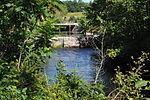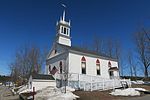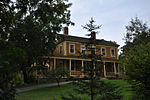Little Falls, Maine
Census-designated places in MaineGorham, MainePortland metropolitan area, MaineUse mdy dates from July 2023

Little Falls is a census-designated place (CDP) in the town of Gorham in Cumberland County, Maine, United States. The population of the CDP was 708 at the 2010 census. Prior to 2010, Little Falls was part of the Little Falls-South Windham census-designated place. It is part of the Portland–South Portland–Biddeford, Maine Metropolitan Statistical Area.
Excerpt from the Wikipedia article Little Falls, Maine (License: CC BY-SA 3.0, Authors, Images).Little Falls, Maine
Gray Road,
Geographical coordinates (GPS) Address Nearby Places Show on map
Geographical coordinates (GPS)
| Latitude | Longitude |
|---|---|
| N 43.731388888889 ° | E -70.425555555556 ° |
Address
Gray Road 772
04038
Maine, United States
Open on Google Maps






